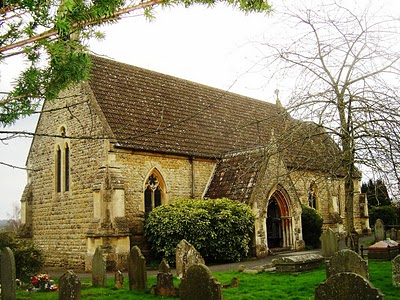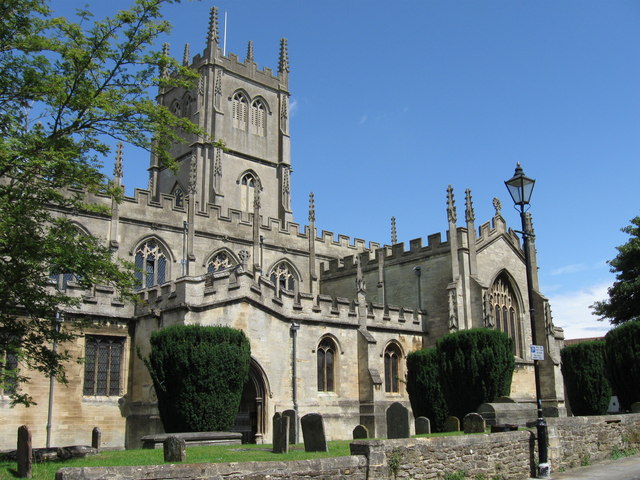About us
The Marden Vale Team Ministry is part of the Salisbury Diocese of the Church of England.
It comprises the villages of Derry Hill, Bremhill and Foxham and the town of Calne. These are set in attractive countryside in the North of Wiltshire. The team was formed in 2010 and is made up of the parishes of Derry Hill, Bremhill, Foxham being joined with the parish of Calne and Blacklands (see http://www.parishofcalneandblackland.org.uk/).
Calne is situated astride the A4 main road to the west of the Marlborough Downs. Derry Hill lies further along the A4, to the west and the two very rural villages of Bremhill and Foxham are spread out to the north. There is a good bus service to Chippenham and Marlborough and there are excellent rail links from Chippenham (6 miles) to London and the West Country and the M4 motorway to the north (12miles). Salisbury lies 25 miles to the south. Bowood House is situated next to Derry Hill.
There is much open farmland and many of the village inhabitants are still employed in farming and other rural activities. However, many of the population commute to work in Swindon, Bath, Bristol and London. There are many activities and social clubs thriving in all parts of the Benefice. More information about what goes on in the rural areas around the town of Calne can be found by visiting www.calnerural.org.
Calne Deanery
Lying just south of the M4 motorway, Calne Deanery is one of the most northerly deaneries in the diocese. It has a rich and diverse social mix and is an interesting place to live and worship. The deanery consists of five benefices: the Marden Vale team ministry at Calne, which includes the growing village of Derry Hill and the smaller villages of Bremhill and Foxham; the market town parish of Royal Wootton Bassett; two rural multi-parish benefices of Oldbury and Woodhill and the large village parish of Lyneham. Lyneham was home to the famous RAF base that brought a particular and poignant focus for the deanery, as we regularly honoured repatriated servicemen and women.
Christ Church, Derry Hill
 Christ Church is a light and airy Victorian church built in 1840. It is in excellent condition and easy to maintain and stands in the heart of the village between the vicarage, the primary school and the village hall. The church is open every day and the handsome spire is often lit at night through sponsorship and can be seen from many miles away. The lighting of the spire can be sponsored in memory of a loved one, or indeed for happier occasions such as baptisms, wedding anniversaries, etc. The core congregation is very loyal and the church is filled to capacity at all the major Christian festivals. The excellent Church of England Primary School has close links with Christ Church.
Christ Church is a light and airy Victorian church built in 1840. It is in excellent condition and easy to maintain and stands in the heart of the village between the vicarage, the primary school and the village hall. The church is open every day and the handsome spire is often lit at night through sponsorship and can be seen from many miles away. The lighting of the spire can be sponsored in memory of a loved one, or indeed for happier occasions such as baptisms, wedding anniversaries, etc. The core congregation is very loyal and the church is filled to capacity at all the major Christian festivals. The excellent Church of England Primary School has close links with Christ Church.
Follow this link to see more about Christ Church:
St Martin’s, Bremhill
 St Martin’s Church was built c.1200. It was altered in 1850 and 1864 with only the tower and other perpendicular work left untouched and has a square 14th century tower. William Lisle Bowles (24 September 1762 – 7 April 1850) was an English poet and critic and in 1804 became vicar of Bremhill.
St Martin’s Church was built c.1200. It was altered in 1850 and 1864 with only the tower and other perpendicular work left untouched and has a square 14th century tower. William Lisle Bowles (24 September 1762 – 7 April 1850) was an English poet and critic and in 1804 became vicar of Bremhill.
Follow this link to see more about St Martin’s:
Follow this link to see more about Bremhill Village:
St John the Baptist, Foxham
 The parish church of Saint John the Baptist was designed by the Gothic Revival architect William Butterfield and built in 1878-81. It includes a stained glass window made in about 1855 that was part of the east window of St Martin’s parish church, Bremhill.
The parish church of Saint John the Baptist was designed by the Gothic Revival architect William Butterfield and built in 1878-81. It includes a stained glass window made in about 1855 that was part of the east window of St Martin’s parish church, Bremhill.
Follow this link to see more about St John the Baptist Church:
Holy Trinity, Quemerford
 This is a truly delightful church set back among trees just off the A4, to the East of Calne centre. Holy Trinity Church was built in the 19th century by the then Vicar of Calne, Canon John Guthrie, to meet the needs of the growing community of Quemerford. Canon Guthrie was Vicar of Calne from 1835-65. He did much work to improve the life of the town in his day, which included the founding of the school which still bears his name (in William Street). Holy Trinity was built as a chapel of ease, largely at his own expense.
This is a truly delightful church set back among trees just off the A4, to the East of Calne centre. Holy Trinity Church was built in the 19th century by the then Vicar of Calne, Canon John Guthrie, to meet the needs of the growing community of Quemerford. Canon Guthrie was Vicar of Calne from 1835-65. He did much work to improve the life of the town in his day, which included the founding of the school which still bears his name (in William Street). Holy Trinity was built as a chapel of ease, largely at his own expense.
Follow this link to see more about Holy Trinity:
St Mary the Virgin, Calne
 The Parish Church of St Mary the Virgin stands proudly on the site of an earlier Saxon Minster. Its outer appearance, a skillful blend of stone masons’ art of five centuries, is Perpendicular, a feast of embattled parapets and pinnacles. A mighty 17th Century North Transept Tower replaces the fallen crossing tower. Exploring the interior reveals a transitional Norman Nave surmounted by the 15th Century clerestory covered by a superb wooden roof of the same date. The many treasures of the church range from an early Elizabethan chest to fine early twentieth century Art and Craft screens. In 1994, the Parish celebrated the 750th anniversary of St. Edmund, a former Vicar of Calne, who became Archbishop of Canterbury in 1234.
The Parish Church of St Mary the Virgin stands proudly on the site of an earlier Saxon Minster. Its outer appearance, a skillful blend of stone masons’ art of five centuries, is Perpendicular, a feast of embattled parapets and pinnacles. A mighty 17th Century North Transept Tower replaces the fallen crossing tower. Exploring the interior reveals a transitional Norman Nave surmounted by the 15th Century clerestory covered by a superb wooden roof of the same date. The many treasures of the church range from an early Elizabethan chest to fine early twentieth century Art and Craft screens. In 1994, the Parish celebrated the 750th anniversary of St. Edmund, a former Vicar of Calne, who became Archbishop of Canterbury in 1234.
Follow this link to see more about St Mary the Virgin, Calne:
St Peter, Blackland
 St Peter’s Church dates from at least the 13th Century. There was a church here at the time of the Domesday survey, when it was described as being in very poor condition. The oldest visible part of the church is the chancel which still has its original trussed rafter roof. The bell that tolls at St Peter’s today has done so for over 300 years. Many of the windows have Stained Glass designed by Charles Kempe (1837-1907). Kempe was a devout Christian and a Master of Glass. He operated out of a factory in London, and his influence spread far and wide across the UK (with windows in Gloucester Cathedral) and across North America. At one time the church stood in the heart of a village community. That original farming community has disappeared, ousted by the needs of sheep farming; but the church lies within the lovely setting of Blackland Park. The Parish of Blackland was joined to the Parish of Calne in the 1990’s. Walking or cycling to the Church is the better approach, since car parking is very restricted.
St Peter’s Church dates from at least the 13th Century. There was a church here at the time of the Domesday survey, when it was described as being in very poor condition. The oldest visible part of the church is the chancel which still has its original trussed rafter roof. The bell that tolls at St Peter’s today has done so for over 300 years. Many of the windows have Stained Glass designed by Charles Kempe (1837-1907). Kempe was a devout Christian and a Master of Glass. He operated out of a factory in London, and his influence spread far and wide across the UK (with windows in Gloucester Cathedral) and across North America. At one time the church stood in the heart of a village community. That original farming community has disappeared, ousted by the needs of sheep farming; but the church lies within the lovely setting of Blackland Park. The Parish of Blackland was joined to the Parish of Calne in the 1990’s. Walking or cycling to the Church is the better approach, since car parking is very restricted.
Follow this link to see more about St Peter’s Church:






























